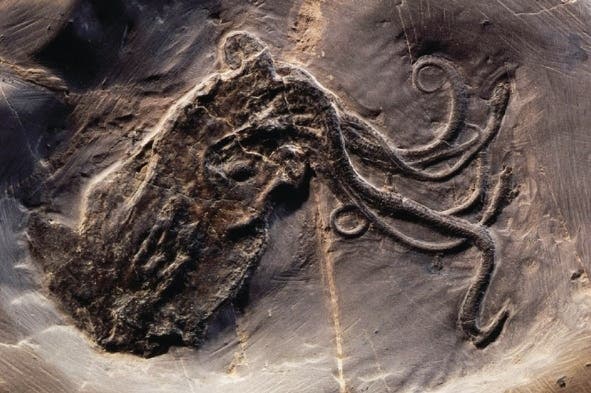A 3D digital reconstruction of a full-body octopus fossil discovered in 1982 sheds new light on the evolution of cephalopods.

Finding a high-quality fossilized cephalopod is really, really hard. While paleontologists find fossils of their hard body parts quite often, things like ammonites’ shells or belemnite guards, the problem is that most of a cephalopod’s body is made of soft tissue — which almost never fossilizes.
Findings are so rare that the most spectacular cephalopod body impression was found in France in 1982 and nothing since has come close to it. Uncovered by J. C. Fischer and B. Riou, it represents a 165 million-year-old fossilized octopus with eight arms they named Proteroctopus ribeti. Each such fossil offers a unique glimpse into the anatomy of ancient cephalopods, and this find was no different — in fact, it was unprecedentedly well-preserved, and the team managed to describe the animal’s suckers off the fossil.
But there are limits to how much information can be gleaned off of them. The animal was squished during fossilization, and the end product looked not dissimilar to a deflated football, which made it difficult to determine its anatomy or how where it fits into the tree of life.
The work of Isabelle Kruta and her team from the Pierre and Marie Curie University in Paris could finally bring this fossil back to live-like proportions — in the digital world. The researchers reconstructed the animal in 3D using a high-definition imaging technique known as synchrotron microtomography. Restored, Proteroctopus looks like it falls within a major octopus group called Octopodiformes (or Vampyropoda), which includes the common octopus. Actually, it looks a lot like deep-sea dwelling Octopodiformes, and also lacks an ink sac. But there are a few differences too. The ancient octopus has eight arms and a fin sticking out on either side of its body, and its suckers are obliquely offset from one another rather than occurring side by side as in many of today’s octopuses.
This striking similarity shows that octopuses were already widely diversified by about 164 million years ago
“[Characteristics] we thought were quite recent in the evolution of the group, such as the shape of some suckers, were already present in the Jurassic,” Kruta says.
It also shows that the animals haven’t changed much since then, a testament to how well they’ve adapted to ocean life.
The full paper “Proteroctopus ribeti in coleoid evolution” has been published in the journal Paleontology.






